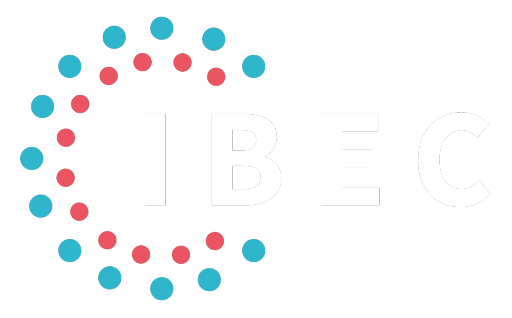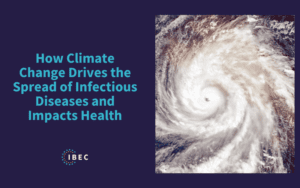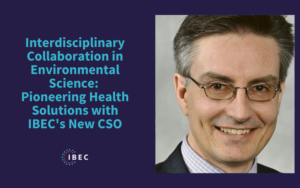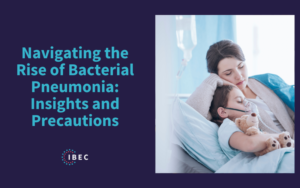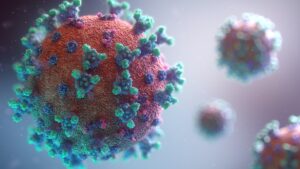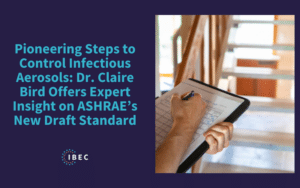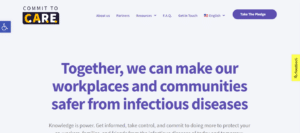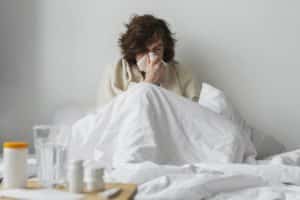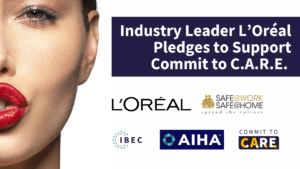
It’s not a surprise that one of our society’s most affected industrial sectors is the education sector. Despite the 2020-21 academic year ending better than years before thanks to ventilation efforts, outside graduation, and vaccines, it was still one of the most challenging years educators ever experienced.
COVID-19 has highlighted the education industry’s preexisting opportunity and achievement gaps, where disadvantaged students struggled the hardest.
High school students are now more likely to drop out, and seniors are less likely to pursue further education. The impacts have not just been economic; students, teachers, and staff are feeling the mental weight of this process – affecting their mental well-being and overall health.
Students and teachers have been affected in the same way. A study showed that because of COVID-19, teachers are less likely to continue their education career until retirement.
Thanks to the collaboration between The American Industrial Hygiene Association (AIHA) and with funding from the Centers for Disease Control and Prevention (CDC), The Integrated Bioscience and Built Environment Consortium (IBEC) included an education panel on the “Protecting Our Most Vulnerable Workers: Challenges, Solutions & Invisible Barriers” virtual summit.
At the session, were able to identify the biggest challenges and lessons learned by the education industry in the COVID-19 era.
Continue reading to learn more.
Main Challenges Educators Experience in the COVID-19 Era
Educators as Essential Workers
A sector of the education industry – teachers – were able to teach classes virtually and avoid in-person settings for a while. However, other sectors such as principals, cleaning staff, administrative staff, and more had to be inside buildings the entire time. This situation elevated the risk associated with COVID-19 transmission.
Helping Everyone Involved
It became evident that passing along important information would be a difficult task to manage. There was the need to communicate inside schools and with the community about how schools worked and all the regulations needed to keep everyone safe.
Children are Not Just Little Adults & Schools are Not Little Offices
At the beginning of the pandemic, there was the misconception of children being just little adults. Dealing with children is very hard, and they need even more care than grown-ups. Children breathe more air per pound than adults, so indoor air quality is essential.
In the same line of thought, schools are not little offices. These buildings operate very differently – in fact, they are more occupied than nursing homes. This is why it was essential to find a way to provide schools with cleaner air, water, and facilities.
Separating What Worked from Hygiene Theater
In the beginning, there was information coming from all fronts, and it was hard to be sure what worked and what was just hygiene theater. What was designed to make people feel good, and what would actually make everyone safe.
School districts were never big fans of temperature checks, considering asymptomatic transmission. Instead, they try to factor in bus routes, hallway flows, drop-offs, which doors would be used, and much more.
Every School is Unique
Every school district is unique and every building inside that school district is unique too. There was no way to create an overall plan that worked for everyone. Educational Agencies were left with broad ideas to give. Then, schools needed to find a way to use them in their environment.
Schools that were already at a disadvantage became even more vulnerable after COVID-19. Most of the regulations were created for schools with the resources to make changes; however, numerous schools did not have the resources to participate.
Lessons Learned from Educators in the COVID-19 Era
The Importance of Stakeholders
One part of the process that proved to work well for mitigating the spread of COVID-19 within the education sector was using stakeholders. Their involvement is essential to guarantee a continuous process of dialogue and a continuous effort to reassess and revise plans as situations change almost hourly.
From a national perspective, education agencies helped their leaders and members navigate and decipher the technology and the public health guidance. Sometimes, reading CDC and other organizations’ resources can be difficult, so there was a need to help navigate that world.
Advocating for leaders to become friends with public health officials is crucial to keep everyone safe in schools. There needs to be a collaboration with local health departments to develop prevention policies.
Contact Tracing
Contact tracing is a practice that involves notifying people who have come into close contact with someone diagnosed with COVID-19 and helping them determine what steps to take.
This practice has become crucial in making everyone safe inside schools. It helps with prevention and mitigates the spread of the virus without knowing it.
Layered Mitigation Approach
The school industry has learned that the best mitigation approach is a layered one when it comes to making schools safe from COVID-19. All mitigation strategies are not created equal, and there is a hierarchy of priorities.
Putting things like ventilation and filtration at the top of the list is more important than cleaning surfaces. Screening, while important, is not as important as vaccination, boosters shots, testing, and ventilation.
Communication is Key
Communication is vital whenever there is a need to change human behavior. In schools, you try to make students do what is needed, teachers do what is needed, and parents understand why these things are necessary.
When schools start sharing these regulations and measures to keep the students and their families safe, everything works a lot smoother. All school members want to go back to school, and it is powerful to tap into that emotion.
Labour Management Collaboration
It is essential to give local schools information, to understand it, and pass it along clearly. The idea is to provide these schools with tools to communicate with the people in school districts and larger organizations that can help keep everyone safe.
Debunking Misconceptions
It’s been essential to debunk information that doesn’t come from a scientific perspective. There is a need to cope with a safety perception that doesn’t have any factual basis for belief.
Education is the only way to tackle some of those misplaced perceptions.
Conclusion and Resources
Educators care for others and also have to care for themselves and their families. The COVID-19 pandemic has brought a series of challenges that have shifted how schools operate.
Conversations, where we ask them about their needs and listen to their doubts and concerns, are essential since it’s everyone’s responsibility to keep our vulnerable industries informed and protected.
If you’d like to check out the complete Education panel of the “Protecting Our Most Vulnerable Workers: Challenges, Solutions & Invisible Barriers” virtual summit, click here.
You can also check out the complete virtual summit here.
If you want to check out more resources on how first responders can be safe from the spread of COVID-19, browse the following list:
5 on the Frontline: David Beatty and School Reopening Amidst COVID-19 – American Industrial Hygiene Association (AIHA)
Reopening: Guidance for Schools (K-12) – American Industrial Hygiene Association (AIHA)
Schools, Child Care, and Colleges – Centers for Disease Control and Prevention
Guidance for COVID-19 Prevention in K-12 Schools – Centers for Disease Control and Prevention
School Testing for COVID-19 – Centers for Disease Control and Prevention
What to Know About COVID-19 Testing in Schools – Centers for Disease Control and Prevention
COVID-19 Guidance for Operating Early Care and Education/Child Care Programs – Centers for Disease Control and Prevention
Pledge to do your part in making your building, organization, and community healthier and safer from COVID-19 – Commit To C.A.R.E – American Industrial Hygiene Association (AIHA) & The Integrated Bioscience and Built Environment Consortium (IBEC)
Related Blogposts
How Climate Change is Propelling the Spread of Infectious Disease
By Stephane Bilodeau, Eng., Ph.D., FEC, Chief Science Officer at IBECClimate change is not only an ecological crisis; it fundamentally alters public health dynamics worldwide…
IBEC Statement on the Quarantine of Cargo Ship in Argentina Due to Suspected Mpox Case
The recent news regarding the quarantine of a cargo ship near Argentina’s Rosario Port due to a suspected case of mpox underscores the continued global…
Interdisciplinary Collaboration in Environmental Science: Pioneering Health Solutions with IBEC’s New CSO
The Integrated Bioscience and Built Environment Consortium (IBEC) proudly introduces its new Chief Scientific Officer (CSO), Stephane Bilodeau. Bringing over 25 years of diverse experience…
Navigating the Rise of Bacterial Pneumonia: Insights and Precautions
Navigating the Rise of Bacterial Pneumonia: Insights and Precautions As winter’s chill sets in, health professionals and organizations brace for the annual uptick in respiratory…
New COVID-19 Variant JN.1 Raises in the United States
JN.1 is a highly contagious, fast-spreading subvariant of omicron that has become the dominant strain in the country. According to data from the Centers for…
Pioneering Steps to Control Infectious Aerosols: Dr. Claire Bird Offers Expert Insight on ASHRAE’s New Draft Standard
As we navigate through the challenges posed by the COVID-19 pandemic and other airborne diseases, there is a dire need to implement measures that will…
IBEC Takes the Lead in Developing a Framework for Reducing Indoor Pathogen Transmission
Dear IBEC Partners and Supporters, As we continue to navigate the ongoing threat of airborne pathogens transmission in our shared indoor communities, it’s more important…
New Commit To C.A.R.E. Resources Deliver Innovative Indoor Air Quality Solutions for Safer Workplaces
The Commit to C.A.R.E initiative The Integrated Bioscience and Built Environment Consortium (IBEC) and The American Industrial Hygiene Association (AIHA), two leading organizations committed to…
Staying Ahead of Severe GAS Infections and Other Secondary Bacterial Infections
Severe Group A Streptococcal (GAS) infections, including invasive disease (iGAS), can lead to life-threatening illness and death. CDC is looking into an increase in…
Industry Leader L’Oréal Pledges to Support Commit to C.A.R.E.
Industry Leader L’Oréal Pledges to Support Commit to C.A.R.E. With health experts warning of the triple threat of the continued spread of new COVID-19…
